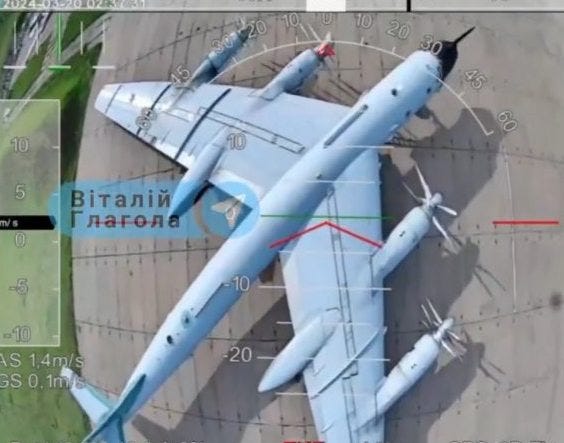Ukraine’s Operation Spider Web—coordinated strikes on at least two Russian air force bases by short-range attack drones smuggled near the bases in hijacked long-haul trucks—destroyed 34 percent of the strategic bombers at those bases on Sunday, claimed Ukraine’s state security agency, the SBU.
That could amount to nearly 40 Tupolev Tu-22M, Tu-95 and Tu-160 bombers: $7 billion worth of essentially irreplaceable warplanes, eliminated in a single operation.
The op was “a great way to put asymmetrical pressure on Moscow,” said David Kirichenko, an analyst for the Center for European Policy Analysis in Washington, D.C. A country with no long-range bombers just out-bombed a country with scores of them.
It could take Russia decades to rebuild what was once the world’s second-largest bomber fleet after the U.S. Air Force’s own fleet of 140 bombers. Reportedly whittled down to just 80 bombers, the Russian air force may now trail the Chinese air force with its roughly 120 bombers.
Of Russia’s three active bomber types, just the Tu-160 is still in production. But at a glacial pace.
The SBU has released a substantial amount of imagery related to Operation Spider Web, including photos depicting the planning and the construction—reportedly inside Russia—of special shipping containers for short-range quadcopter attack drones, as well as recordings of some of the drones’ video feeds as they barreled toward their targets at air bases apparently including Belaya, Ivanovo, Ukrainka, Olenya and Dyagilevo.
There’s clear imagery of just two of the bases, however: Olenya and Belaya, respectively 1,200 and 2,700 miles from Ukraine.
Ineffective defenses
“Russian force protection at their bases was atrocious,” commented Ben Hodges, a retired U.S. Army general. Buzzing right past air-defenses (see video above), the drones struck two Tu-22Ms and one Tu-95 at Belaya as well as three Tu-95s and an Antonov An-12 transport at Olenya.
The other kills the SBU claimed haven’t been verified yet. Even if the toll is just two Tu-22Ms, four Tu-95s and an An-12, those seven destroyed airframes amount to the costliest single-day loss for the Russian air force in the 39 months since Russia widened its war on Ukraine.
Before Sunday, the Russian air force possessed 15 Tu-160s, 47 Tu-95s and 56 Tu-22Ms.
“Daring, innovative, well-planned,” is how Hodges described the operation. Russian bombers routinely launch cruise missiles at Ukrainian cities; a two-night raid on Kyiv, Kharkiv, Odesa and other cities on May 24 and 25 involved hundreds of munitions.
Avenging the cities
By eliminating a significant portion of Russia’s cruise-missile carriers, Operation Spider Web could have “significant effect that should dramatically reduce Russia’s ability to launch missiles against Ukrainian cities and kill civilians,” Hodges noted.
Worse may be coming. “I imagine there’s still another phase to this operation,” Hodges mused.
The “question is whether such an attack can be repeated on other targets,” said Samuel Bendett, an analyst with CNA in Virginia. “This particular attack struck the top of the food chain, so to speak, and will no doubt push Russians to adapt ad hoc defensive measures.”
But even if the Russians manage to harden their air bases and protect their remaining bombers, the damage has been done. The loss of potentially a third of the bomber fleet could gradually cripple the flying divisions by forcing them to make greater use of fewer airframes, with cascading effects on the readiness of the surviving planes.
It wouldn’t happen overnight. But if Moscow demands the air force continue attacking Ukrainian cities at anything approaching the recent rate, the bomber divisions could enter a readiness death spiral.
Read more:






